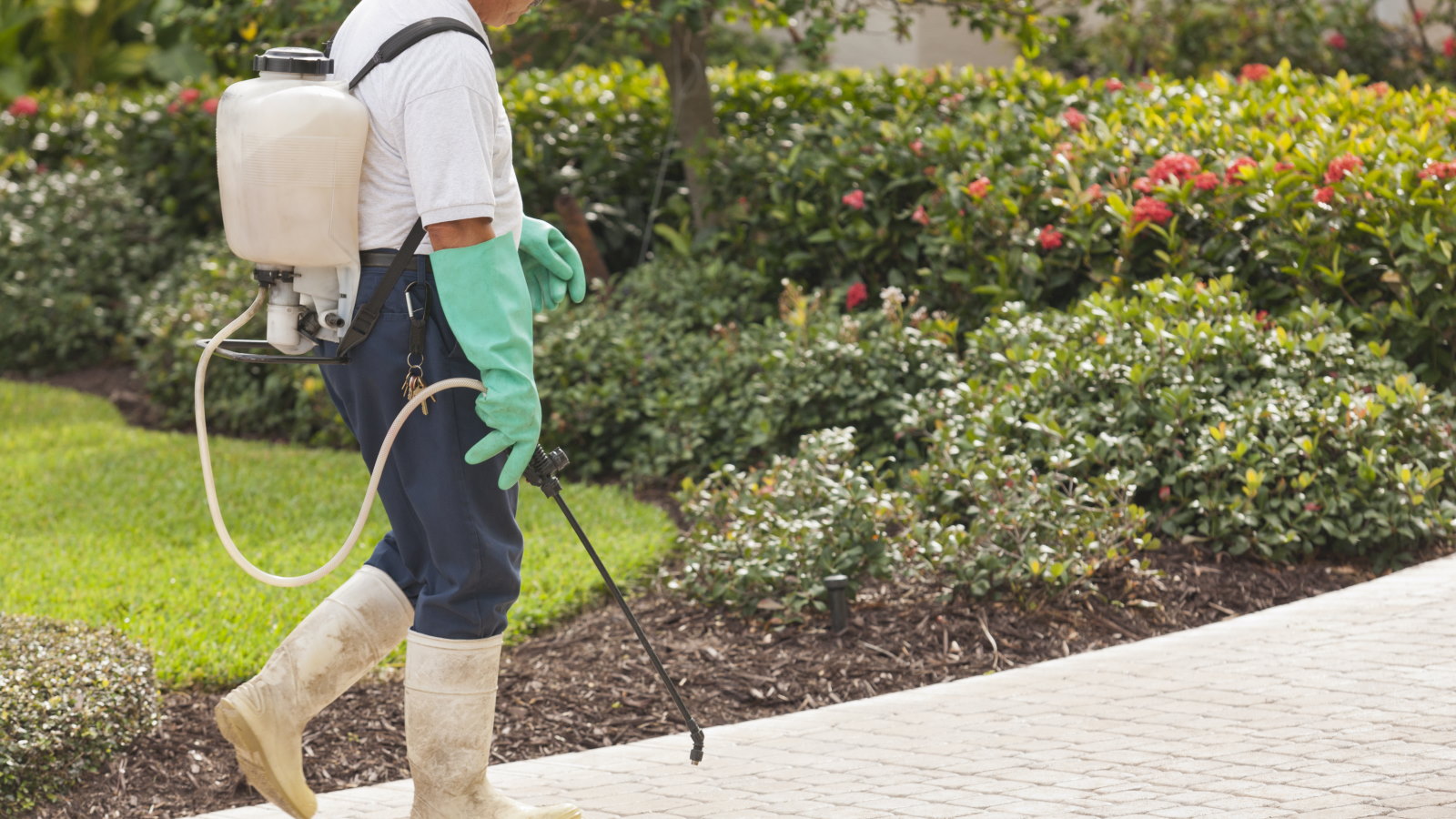
It's the interminable job faced by all gardeners everywhere. Yes, I am talking about weed control. No matter how or where you garden, there will always be unwanted plants popping up in your flower beds, vegetable garden and even pots, taking precious nutrients from the plants you want to grow.
We previously posted a TikTok on how to make a homemade weed killer – and it went viral. It prompted many questions from our followers on how to make weed killer, and how to get rid of weeds, many of which we answer for you here.
We share a recipe for how to make weed killer, which is particularly effective for removing weeds from pavers, and we have also spoken to gardening experts to find out what other methods you can use to keep garden weeds under control.
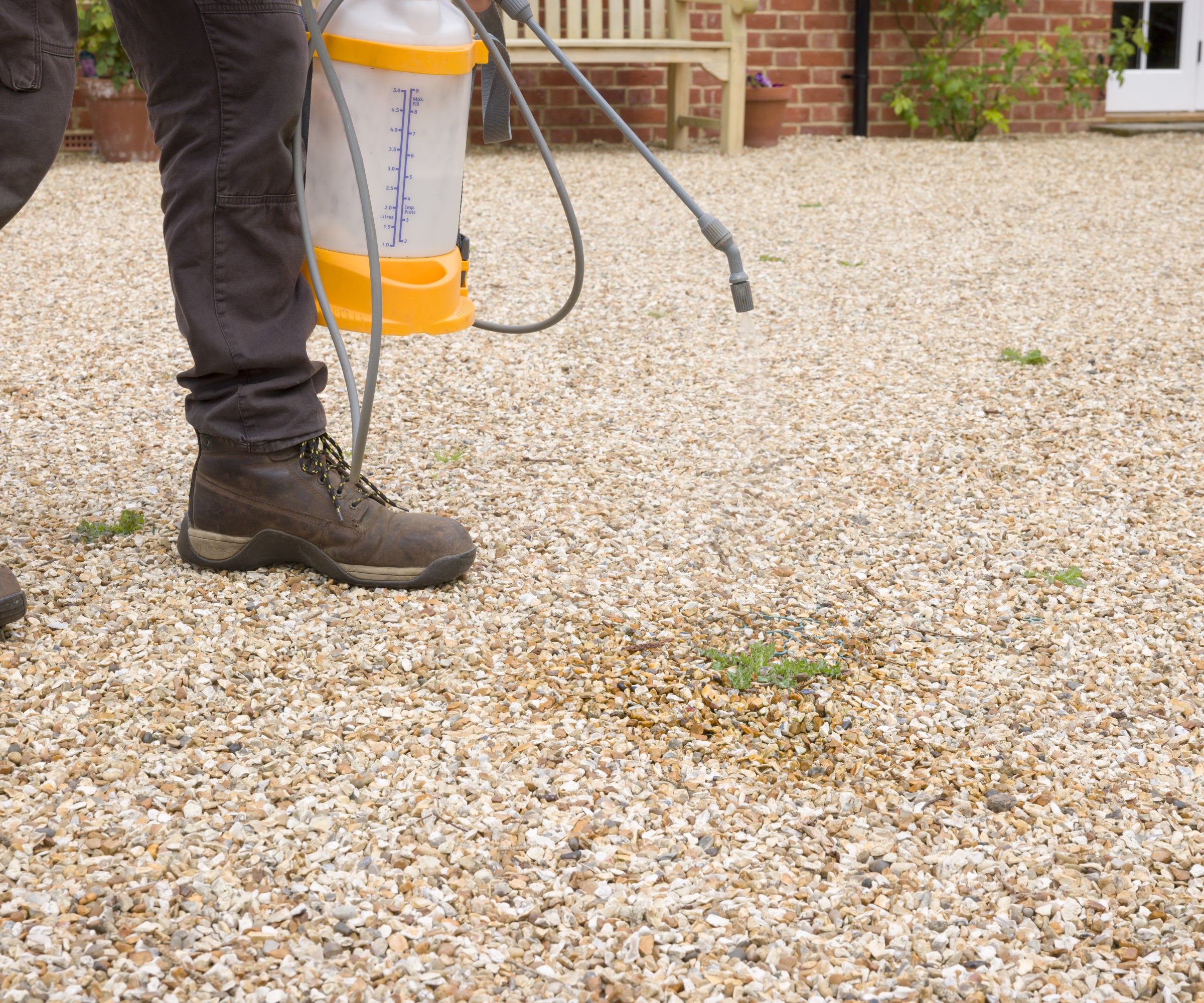
How to make weed killer
You will need:
1. Mix two cups of vinegar, a ¼ cup of salt and 1 tsp of dish soap and pour into a spray bottle.
2. Spray it onto your weeds on a sunny day and leave for 24 hours.
3. Remove the weeds with a weeding tool, like this one from Amazon, at the roots.
@homesandgardensofficial ♬ Cooking Time - Lux-Inspira
Shop essentials to make weed killer
Does a weed killer with vinegar and salt harm plants?
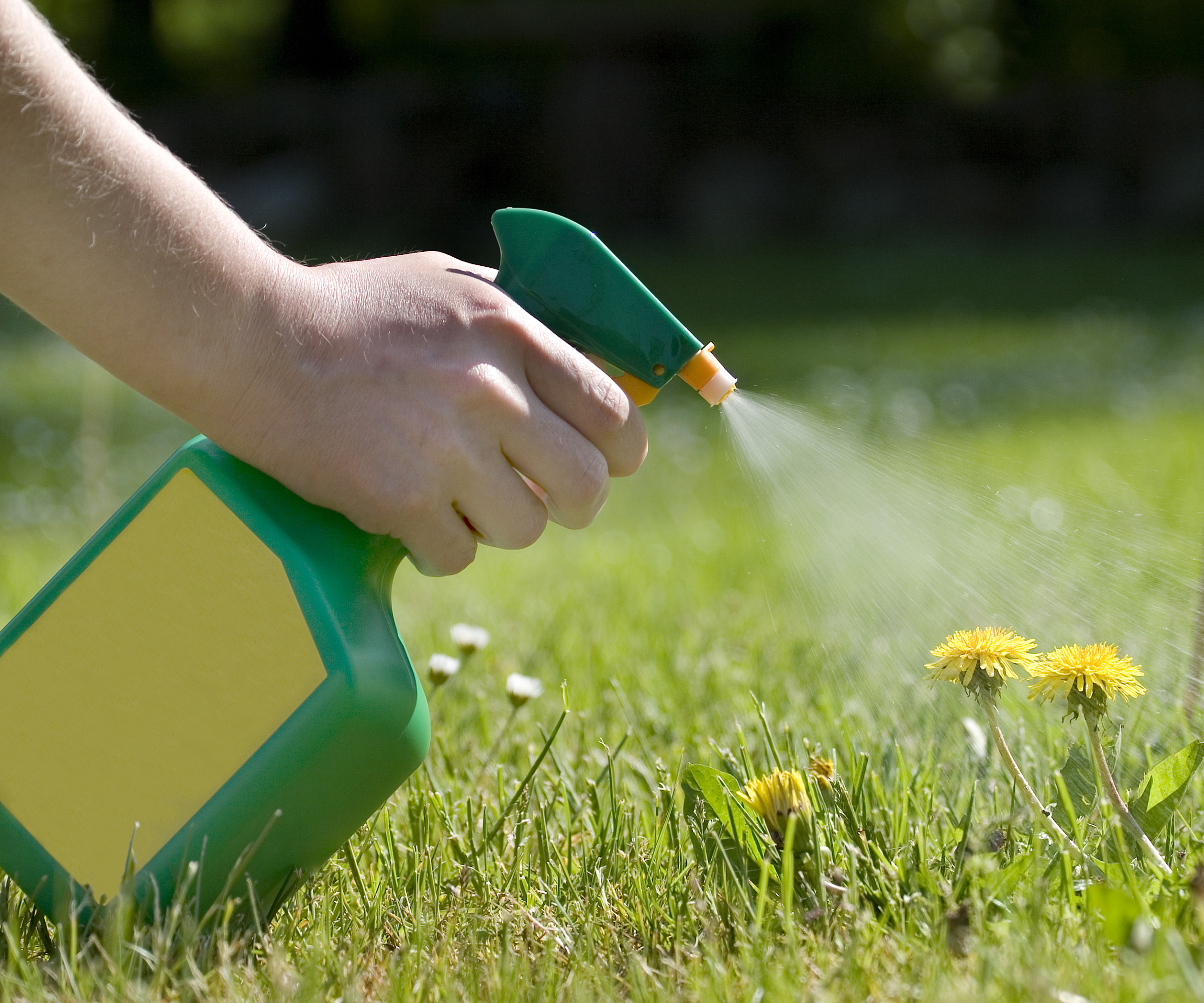
You'll note that our TikTok above is about tackling weeds isolated by pavers. If you want to use it to get rid of grass growing in flower beds or to kill weeds but not grass on a lawn, for example, you will need to exercise caution.
'On the whole, this mix is okay to use, I have done it myself with success,' says our gardening expert and content editor Drew Swainston. 'However, my caveats would be that homemade vinegar-based weed killer is best used on young weeds that have newly-sprouted.
'It quickly targets and kills the above-ground parts of the plant and is therefore best suited to young annuals. It will not be as effective on older weeds and perennial weeds, especially those with tap roots or well-established root systems.
'The above-ground foliage may die back, but the roots will still function and the weed will be able to regrow as a result,' continues Drew.
'Caution should be taken when using salt to kill weeds on beds and borders, or around any other plants in the garden. Not only would you need to be extra cautious as the mixture could be harmful to any existing ornamental plants in the vicinity, but a build-up of salt in the soil will have a detrimental effect on the health of all plants in the area.'
What homemade weed killers are safe to use on flower beds?
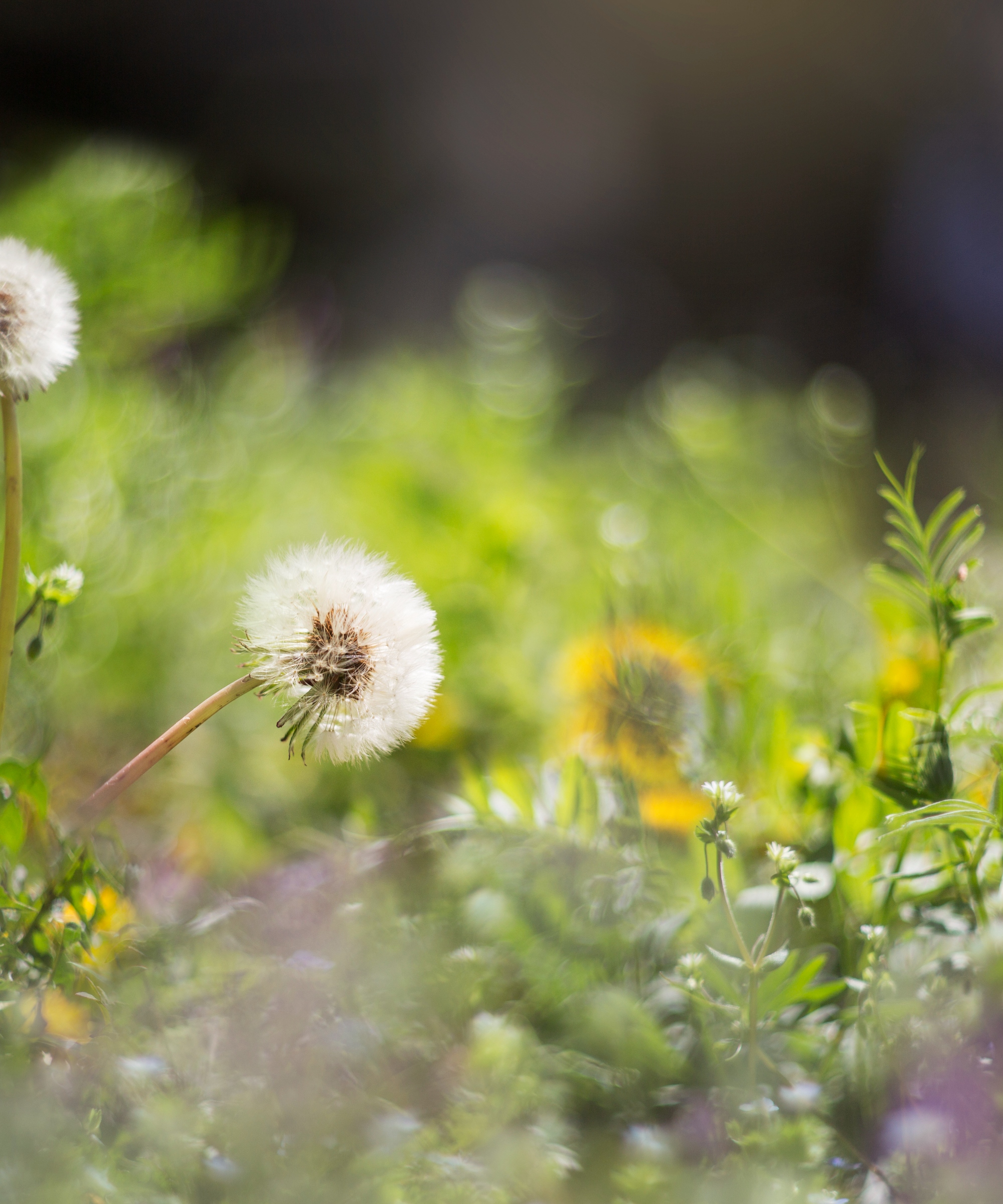
Using cardboard for weed control is a quick and safe way to suppress early weed growth, though be careful not to use cardboard that might have colored dyes, sticky residues or anything else that can run off into the soil. Remove it from the borders once the weeds have died back and you can get at their roots to remove them.
'Solarization is also a safe DIY weed killer,' continues Drew Swainston. 'If you have a large, sunny flower bed you want to plant out, but it is full off weeds, you can lay basic clear plastic sheeting, available from Amazon over the area and kill the weeds with the sun's heat.
'The clear plastic will concentrate the heat of the sun to a degree where it will kill the weeds and eliminate any weed seeds in the soil. You will still have to weed out the roots by hand, however.'
Mulching flowerbeds is another easy homemade DIY weed killer. 'You can smother weeds with a thick layer of mulch,' says Drew. 'The benefit of mulching is that it can also work to improve your flower beds' soil health. Mulch can range from homemade compost to leaf mold, gravel, and more, and all have their benefits.'
However, perennial weeds with persistent roots will still need weeding out by hand.
Using boiling water to kill weeds can also be effective, but H&G's Head of Gardens Rachel Bull says this method will only work on the youngest, newly-emerging weeds. 'Boiling water kills foliage but not established roots,' she says.
'This can make it easier to then dig up the weed and its roots once the leaves have died, but if left in the soil the weeds will simply grow back. You also need to take extreme care not to burn or damage any of your other plants when applying boiling water in flower beds.'
This garden weeder is ideal for a variety of tasks, such as removing invasive weeds, or uprooting dandelions and thistles.
What kills weeds down to the root?
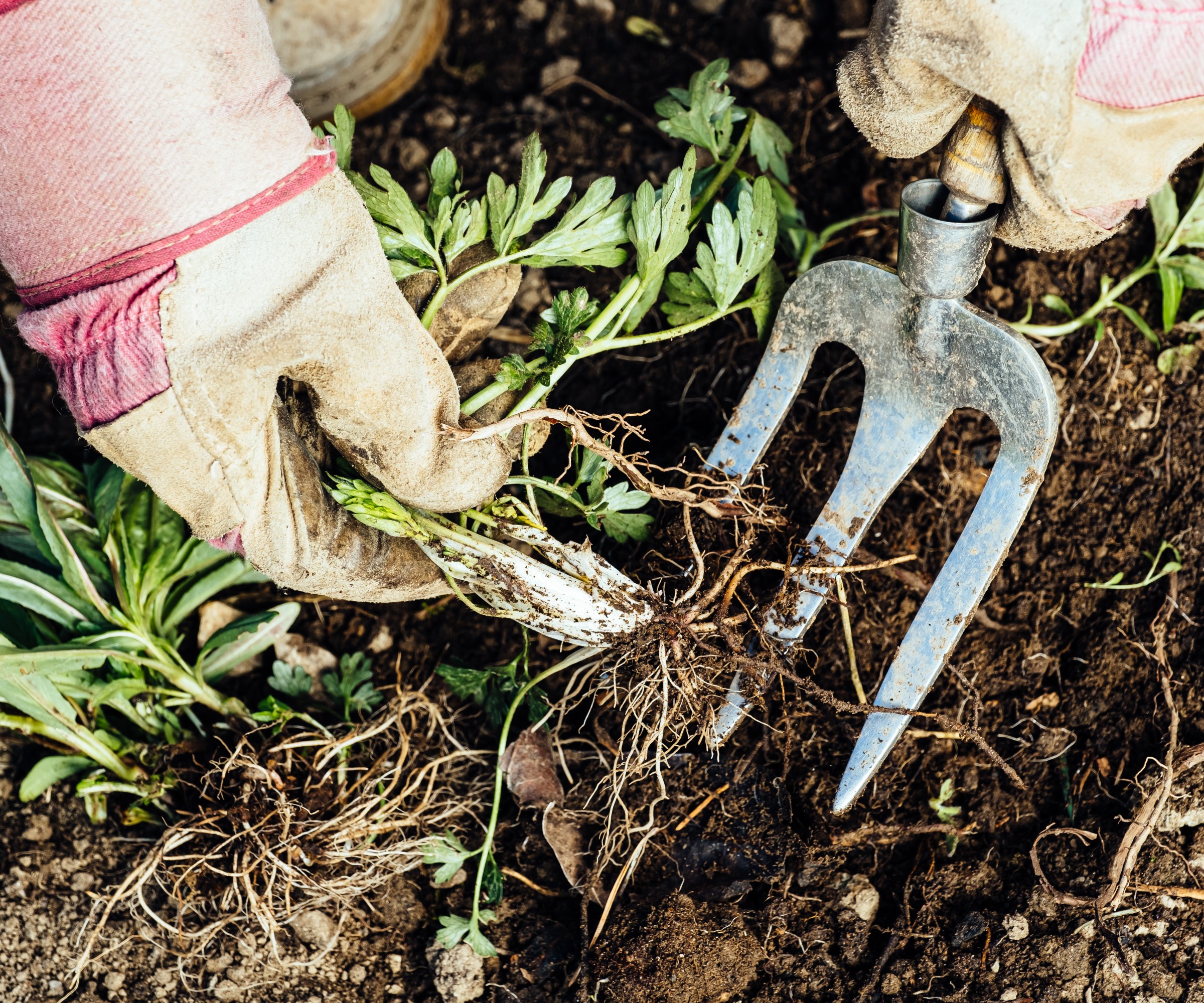
Herbicides aside, the DIY methods above that contain vinegar, boiling water and salted water will kill the roots of young weeds. However, established perennials will need carefully digging out and thoroughly removing if they are not to reappear.
If you are looking for a quicker way to kill weeds yourself, Drew Swainston recommends a flame gun, something he has done in his work as a gardener. 'The heat quickly kills weeds,' he says. 'However, as ever, be careful not to accidentally damage the other plants in your flower beds.'
A weed torch with a wide flame burner that releases a powerful and steady flame. It has a non-slip and comfortable hand and can be connected to fuel cylinders with all CGA 600 standard connector
FAQs
How do you permanently stop weeds from growing?
It is difficult to stop weeds from growing entirely, if not impossible. The best way to ensure your yard stays as weed-free as possible is to remove young weeds - roots and all - before they can take hold, to mulch your flower beds so that they are inhospitable to weeds, and to allow time for regular maintenance sessions from spring through to the end of the growing season.
For us, making this weed killer to use on pavers and decks is a great solution. However, if you are looking to get rid of weeds on flower beds, the best and most permanent solution is hand removal followed by mulching.
Of course, some weeds do have wonderful uses if left to grow, including these flowering weeds for pollinators. They might make you think differently about some of your unwanted plants. In addition, consider picking some weeds to make a plant fertilizer using weeds, for a natural solution in your yard.







